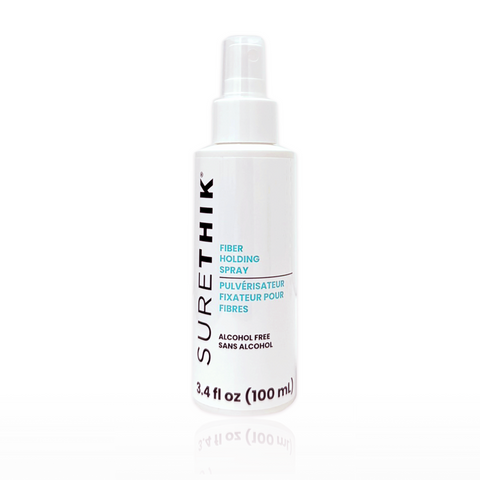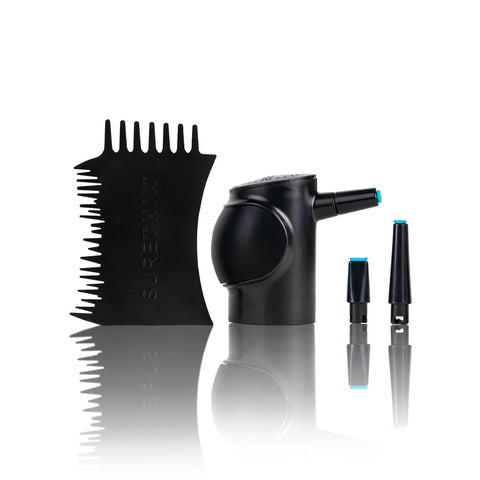
Hair Loss on Your Hairline
Today, there are several potential strategies for managing hair loss on the hairline, as well as some long-term therapy options that help many people. Alopecia, or hair loss, can be treated surgically or with medicines in many cases.
Women are more prone than males to experience thinning hair rather than hair loss at the hairline. It is, nevertheless, still conceivable for women. Frontal fibrosing alopecia and traction alopecia are two instances.
Not to worry, there are a plethora of alternatives and interim solutions available to assist you in filling these gaps and gaining confidence. Continue reading for more hair loss advice and information!

What is the best way to tell if your hairline is thinning?
Hair loss on the hairline does not follow a certain pattern, but there are a few warning indicators to look for. One of these indicators is hair loss. People lose dozens of hairs per day on average. Here are some things to be on the lookout for!
Hormonal Imbalance:
If your hairline is receding or your hair is thinning, there could be hormonal causes for your hair loss, according to the Canadian Hair Loss Council. This means that hormonal hair loss may have different signs than other types of hair loss.
The most common type of hair loss in both men and women is androgenic alopecia, also known as androgenetic or male or female pattern hair loss. Androgenic hair loss develops after puberty. Androgenic alopecia is genetic as well as hormonal.
Hormone shifts can cause hair loss in women as well, though the role of hormones in female pattern hair loss is less clear than in male pattern hair loss. Hair loss is common during menopause, but the hairline does not always change.
Stress:
Stress levels are high, which may cause some people to lose hair.
There are around 100,000 hair follicles on the adult scalp (although, this number may vary based on hair color). Each hair follicle goes through a cycle of growth and rest. The bulk of these hair follicles are in the growth phase at any given time (anagen). When the hair follicle enters telogen, or resting phase, the hair is shed.
What is significant mental stress, exactly? Consider a traumatic event in your life. While a single bad day at work should not be considered, significant and long-term stress caused by the Covid-19 epidemic should. It's also crucial to recognize
Long-term stress, often known as chronic stress, puts people at risk for a number of health problems. These can include depression and anxiety, as well as digestive and sleep issues. Chronic stress has long been associated to hair loss, but the reasons are unknown.
Genetics:
Hair follicles that are excessively sensitive to certain male hormones cause a receding hairline, which appears to be an inherited problem. Hair loss is more likely in men who have a family history of baldness. Hair loss often occurs in the same way from generation to generation.

How to cover up hair loss on your hairline?
Hair loss can be caused by a number of factors. Genetics or aging may be to blame for a substantial proportion of hair loss. Age, on the other hand, is not always a role in hair loss. The cliché "age is nothing more than a number" holds true here. Hair loss can strike at any age, unfortunately. Consider the following suggestions.
1. Hair Building Fibers:
Hair loss fillers, especially around the hairline, are a great technique to mask hair loss. Hair Fibers are intended to be a quick, easy, and dependable hair loss cure. Scientifically developed hair-building fibers for men and women with thinning hair, thinning part lines, and bald spots on the scalp. Hair Fibers Technology is an innovative component of the SureThik formula. Powerful electrostatic-charged fibers stick to fine hair and create the appearance of fuller hair in seconds, according to some of the product's technology. Hair building fiber technology assures that they won't smudge, clump, or smear, making them less noticeable than lower-quality hair fibers.
You can watch Simran, a cosmetic artist and hair bridal hairstylist, describe how she uses the hair fibers on your hair with SureThik Fibers.
2. Increase the Volume Product:
Use a volumizing mousse or spray to give your hair more volume. Volumizing products are wonderful for boosting the volume of your locks. When applied near to the roots, volumizer stiffens the hair strands and causes them to push out from one another. Voila! Instantly boost your volume! It's a win-win situation because these products are also meant to keep your style intact throughout the day. You can also tease hair around thinning areas to make them appear fuller.
3. Hair Extension or Toppers:
Think about getting hair extensions! Clip-in hair extensions are perfect for adding volume and hiding sparse areas. While alternative extensions may be more long-lasting, clip-in extensions are simple to install and light.
Another option is to use hair toppers. A hair topper is designed to fit specific areas of the head, such as the crown, top, and part, and is secured with pressure clips to your natural hair. This is an excellent option if you have obvious hair loss on the top of your head.

While hair loss along the hairline can be upsetting to see, it poses no danger to one's health. Most people can maintain their hairline, and there are treatments available to help the hair look fuller or regenerate. Anyone considering trying these treatments should extensively explore them with a healthcare physician to identify the best option for them.





